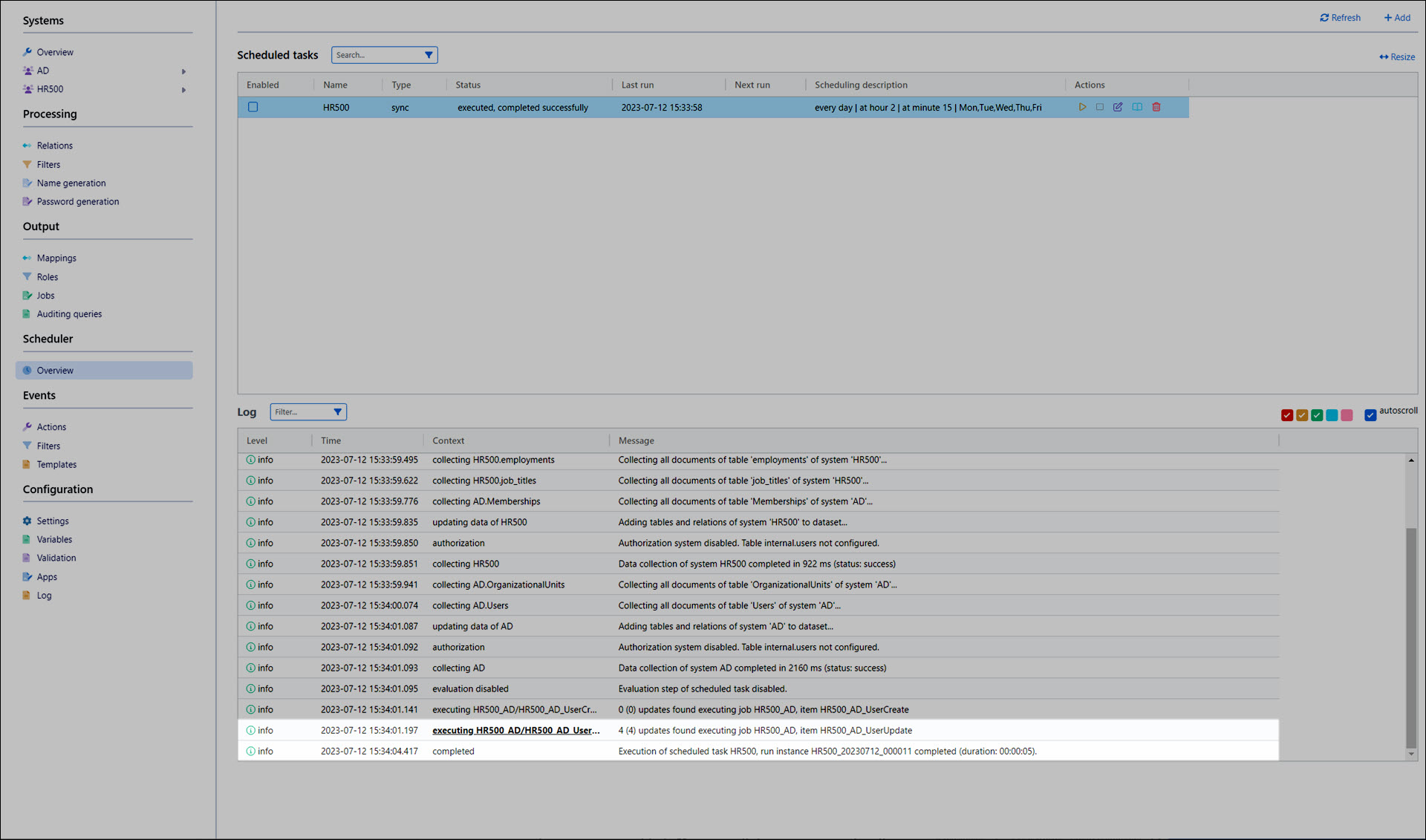Step 10: Add a mapping to update AD accounts (tutorial)
As the last step in the basic tutorial, we'll configure an AD user update mapping.
Modify the source data
Outside of NIM, we'll copy the employees.txt file from our HR500 system, and open it in a text editor.
We'll modify a few names and save the file.

Row #
Old First Name
New First Name
2
Eleanor
Ellie
4
Patrick
Pat
5
Bobby
Bob
6
Marlene
Marly
8
Anna
Ann
We'll copy and paste the updated file over the old one, in the Path that our HR500 system files are located in (configured in Step 1).
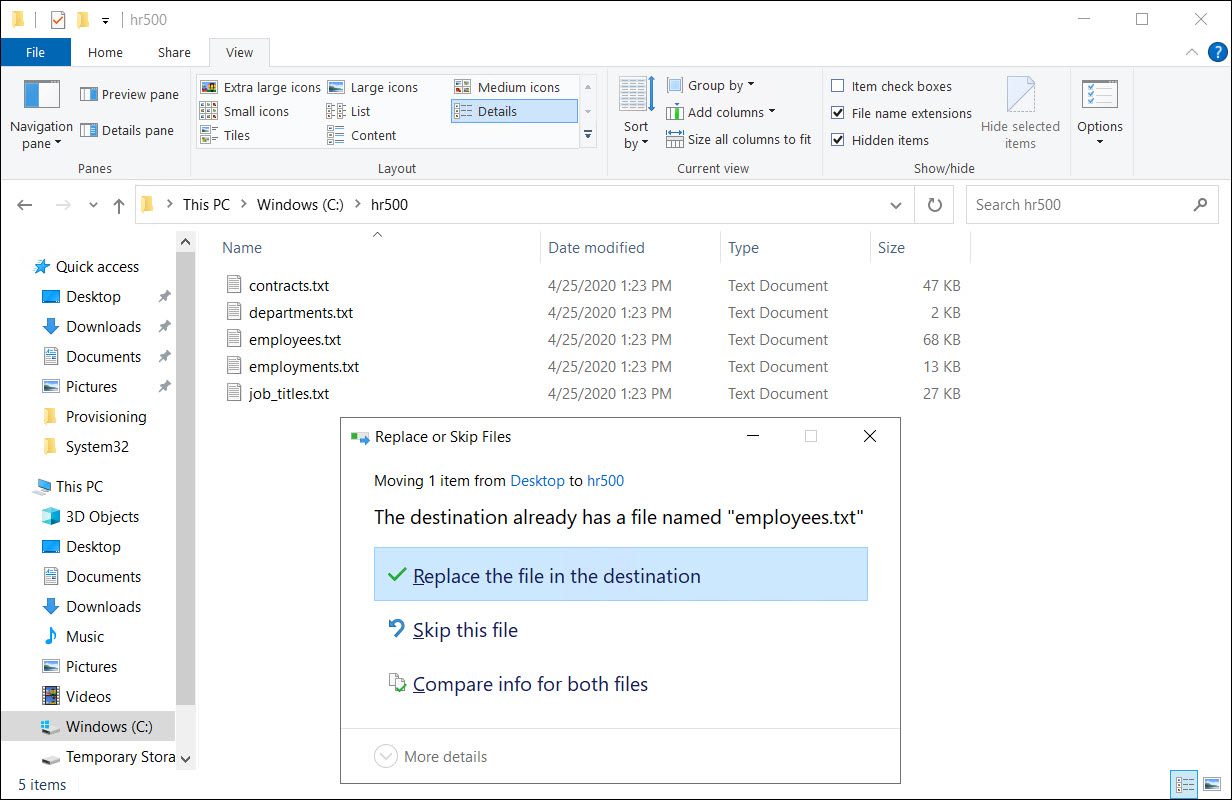
Copy our previous filter
Go to Processing > Filters.
For the HR500_AD_User_Create filter we created previously, click
 Copy Filter.
Copy Filter.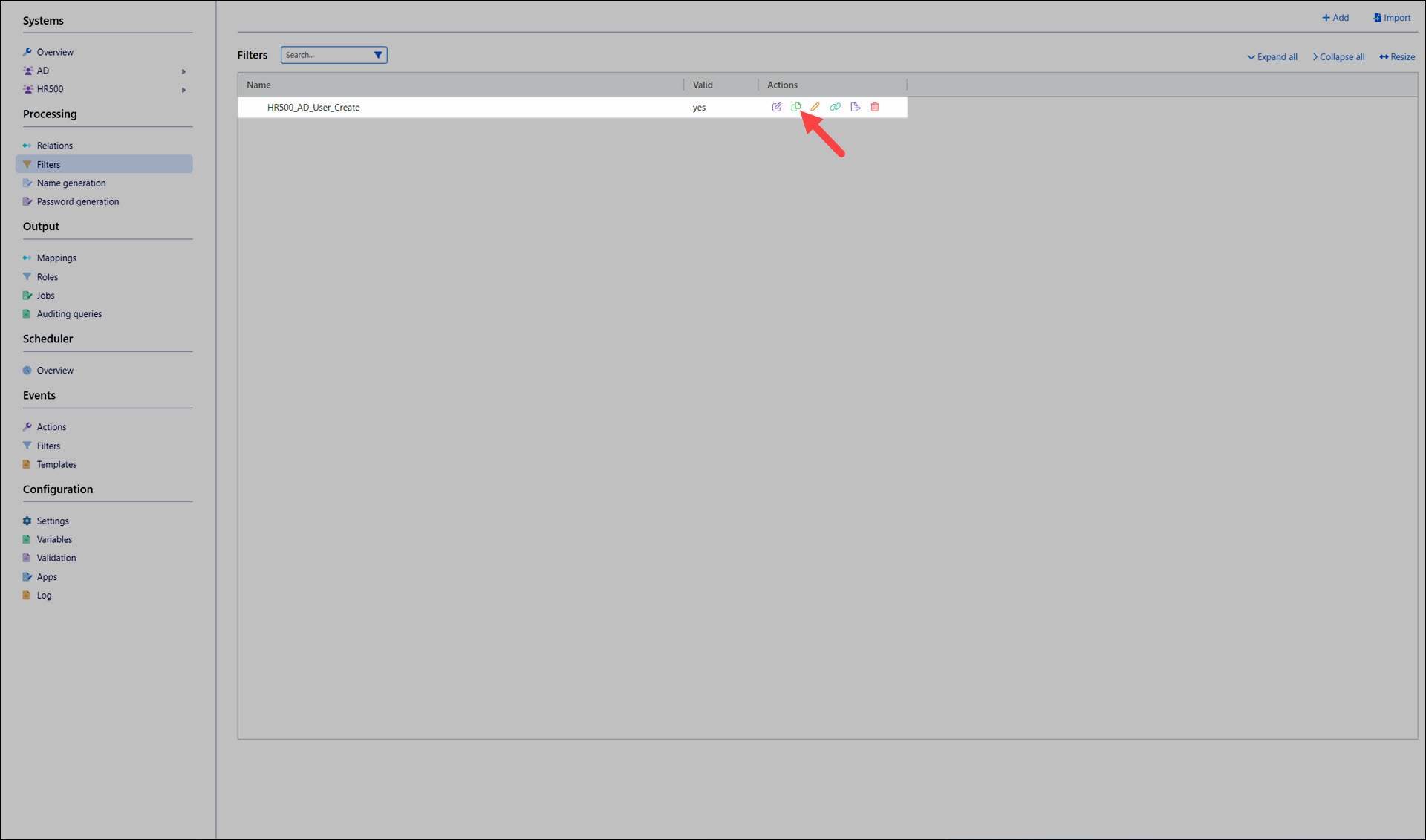
A copy is created, named HR500_AD_User_Create_01:

For the filter copy, click
 Rename Filter. Name it HR500_AD_User_Update.
Rename Filter. Name it HR500_AD_User_Update.
Click Change.
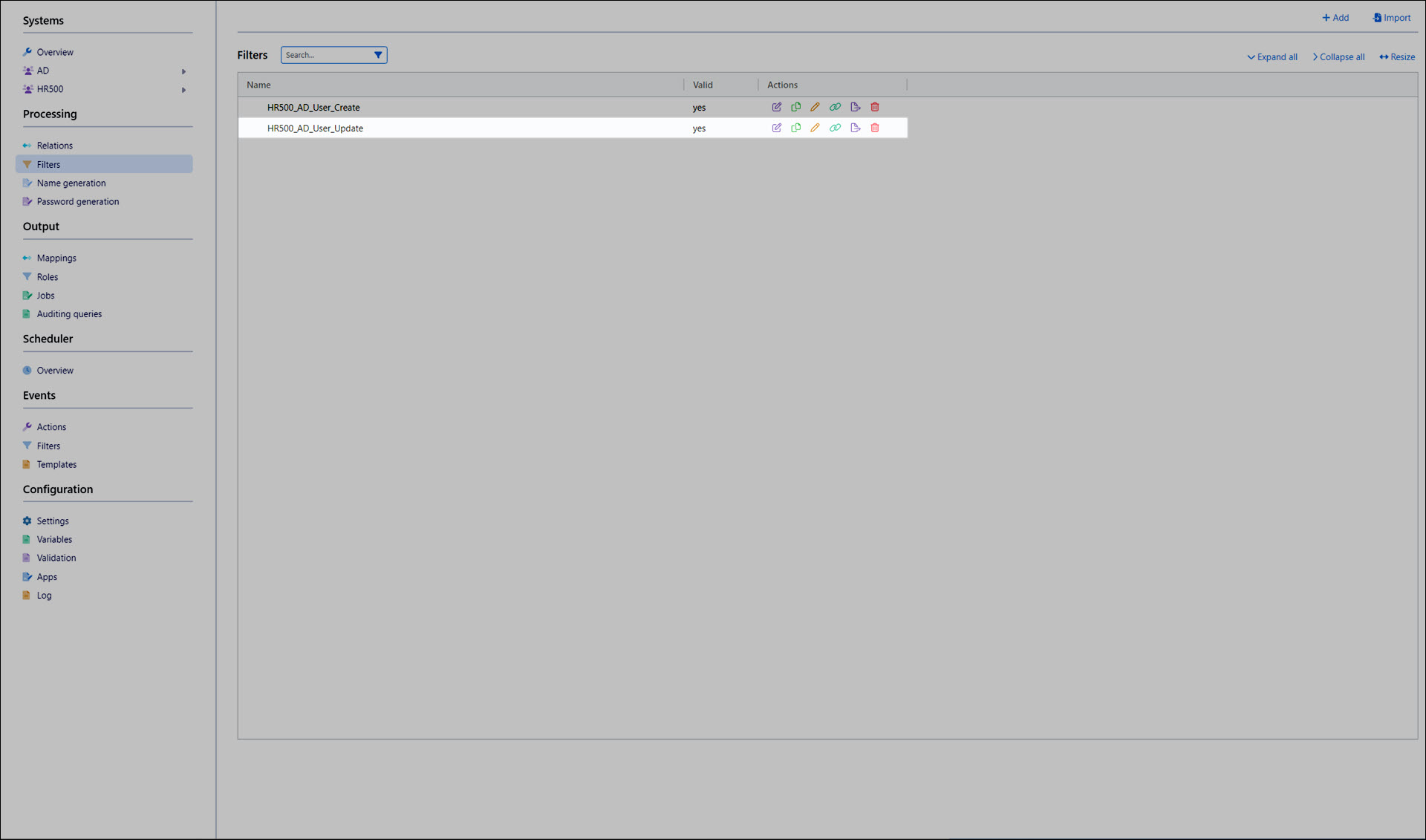
Configure the filter's logic
For the now-renamed HR500_AD_User_Update filter, click
 Edit Filter.
Edit Filter.We'll change the no logical operator to any. This is because we're now looking for employees that do have AD accounts.
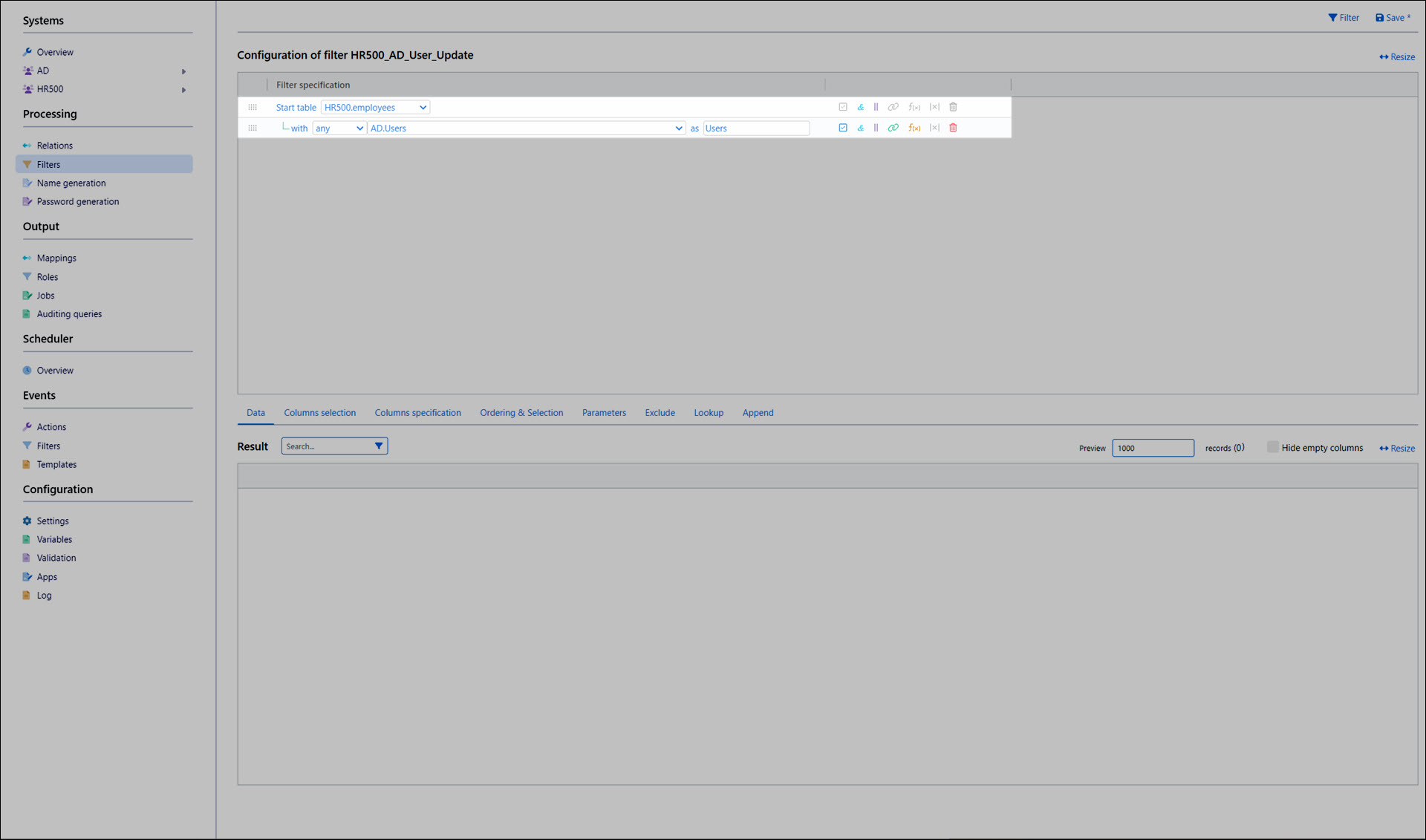
When we click Filter, this is confirmed: all 585 employees are returned.
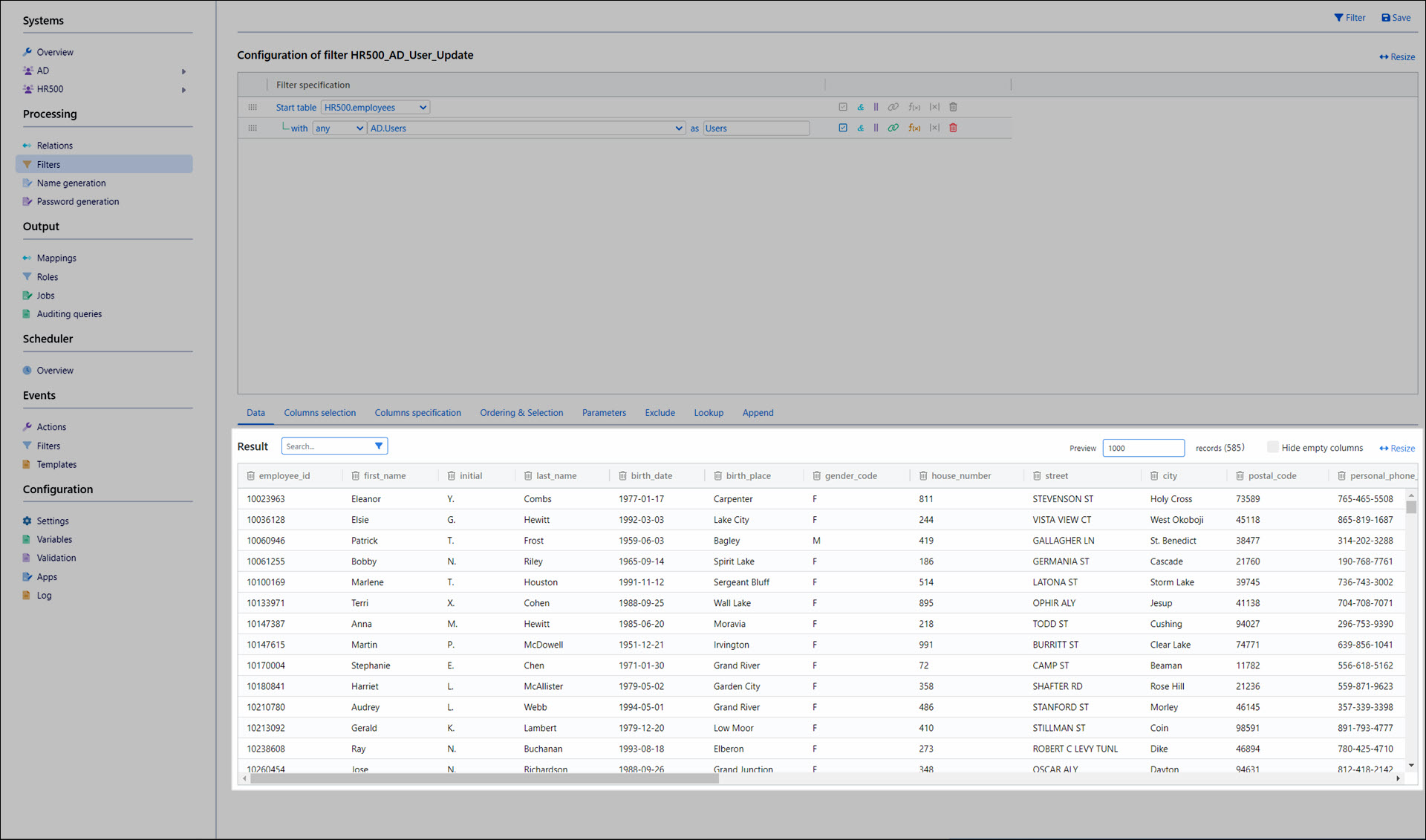
We'll also go to the Columns Selection tab and enable all columns under the Users alias. Whereas these columns were always blank and therefore irrelevant in the HR500_AD_User_Create filter, they will be non-empty in this filter.
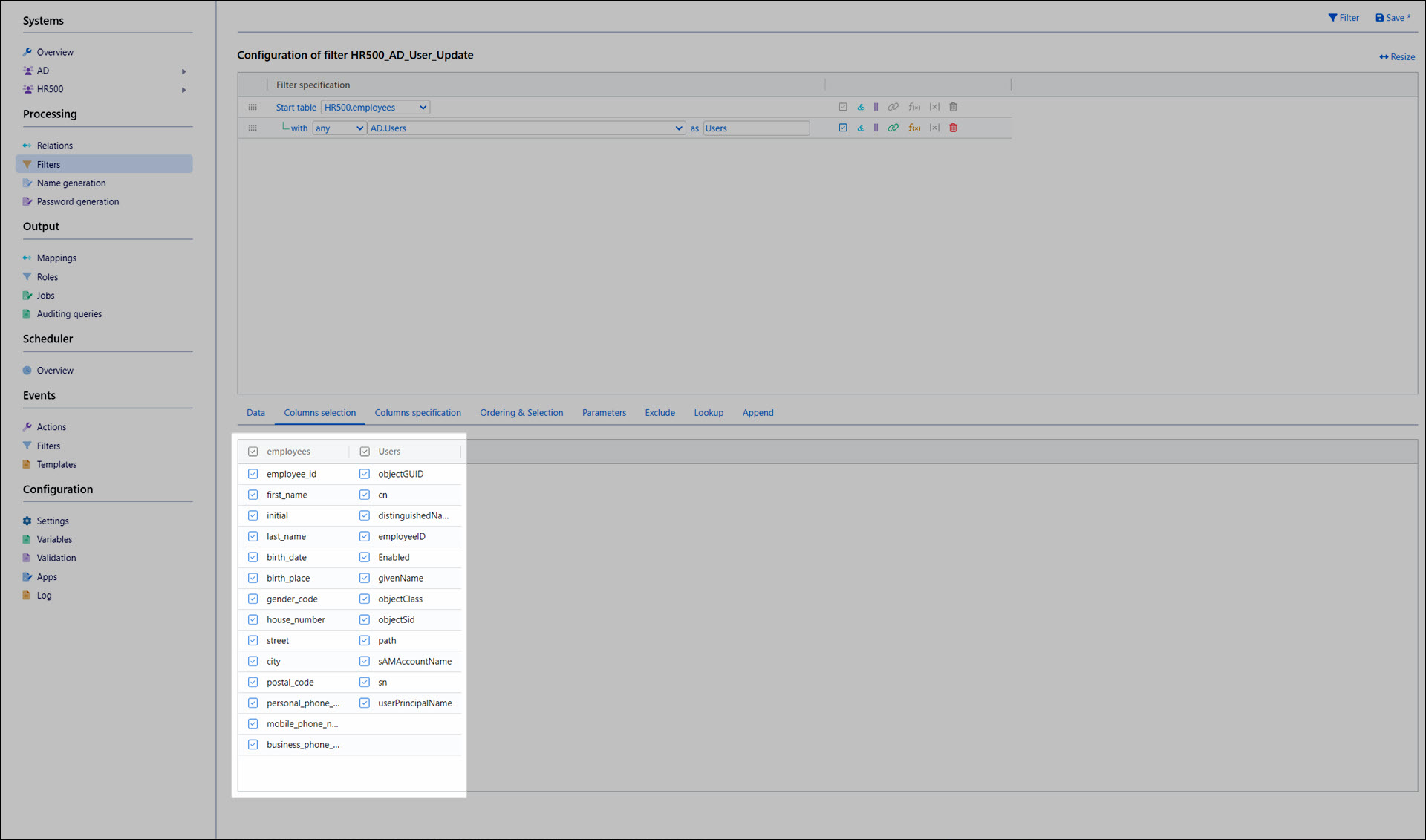
Click Save.
Tip
For an update mapping, we don't need to do any of the logic checks in the filter. The update mapping itself will handle this.
Add the user update mapping
Go to Output > Mappings.
Click Add.
Enter the following values:
System: AD
Target: Users
Function: UserUpdate
Name: HR500_AD_UserUpdate

Click Save.
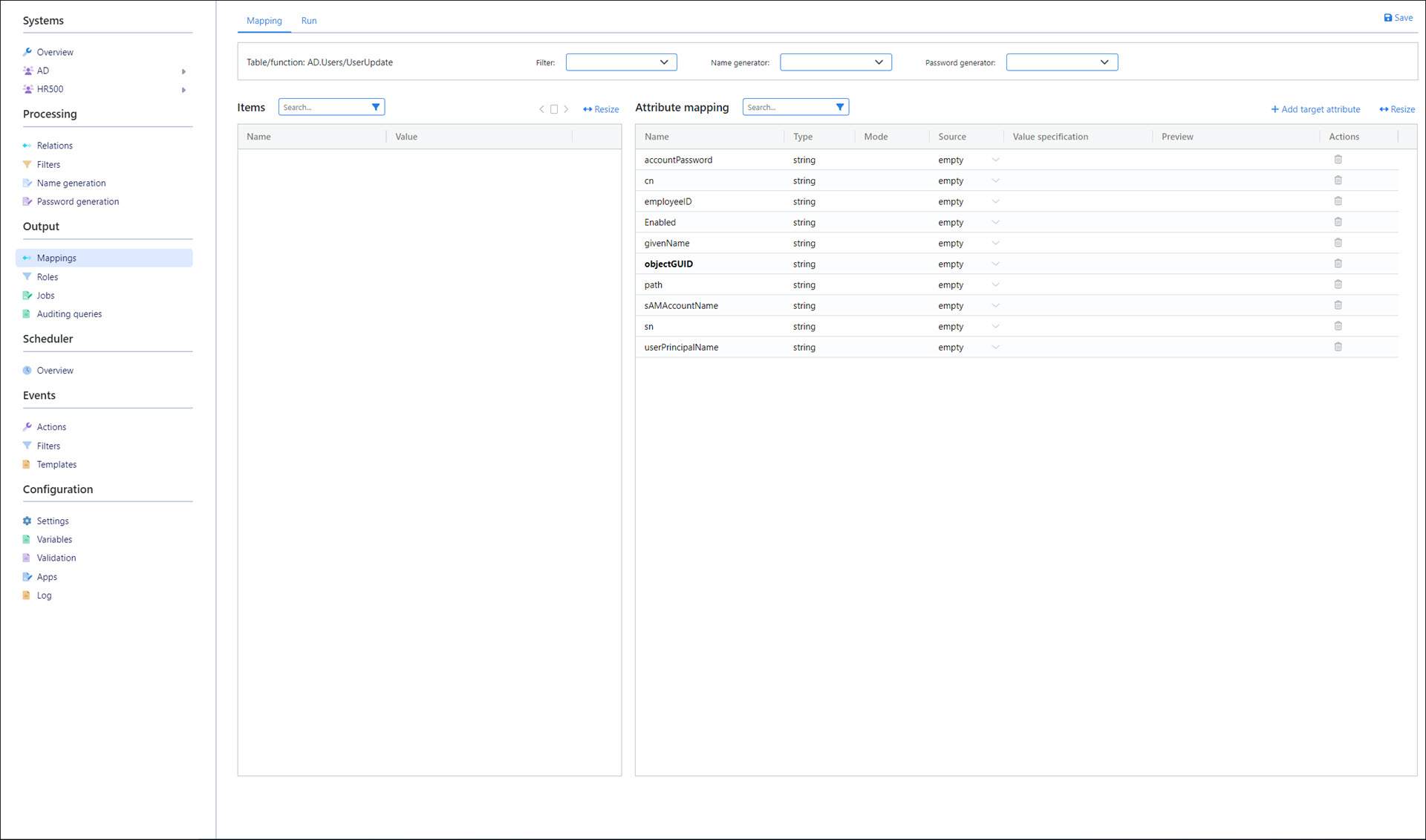
Configure the mapping
For the mapping's Filter, select HR500_AD_User_Update. Its columns are populated into the Items pane.

In the Items pane, click the > button to preview the first record.

For this example, we'll only map the following attributes:
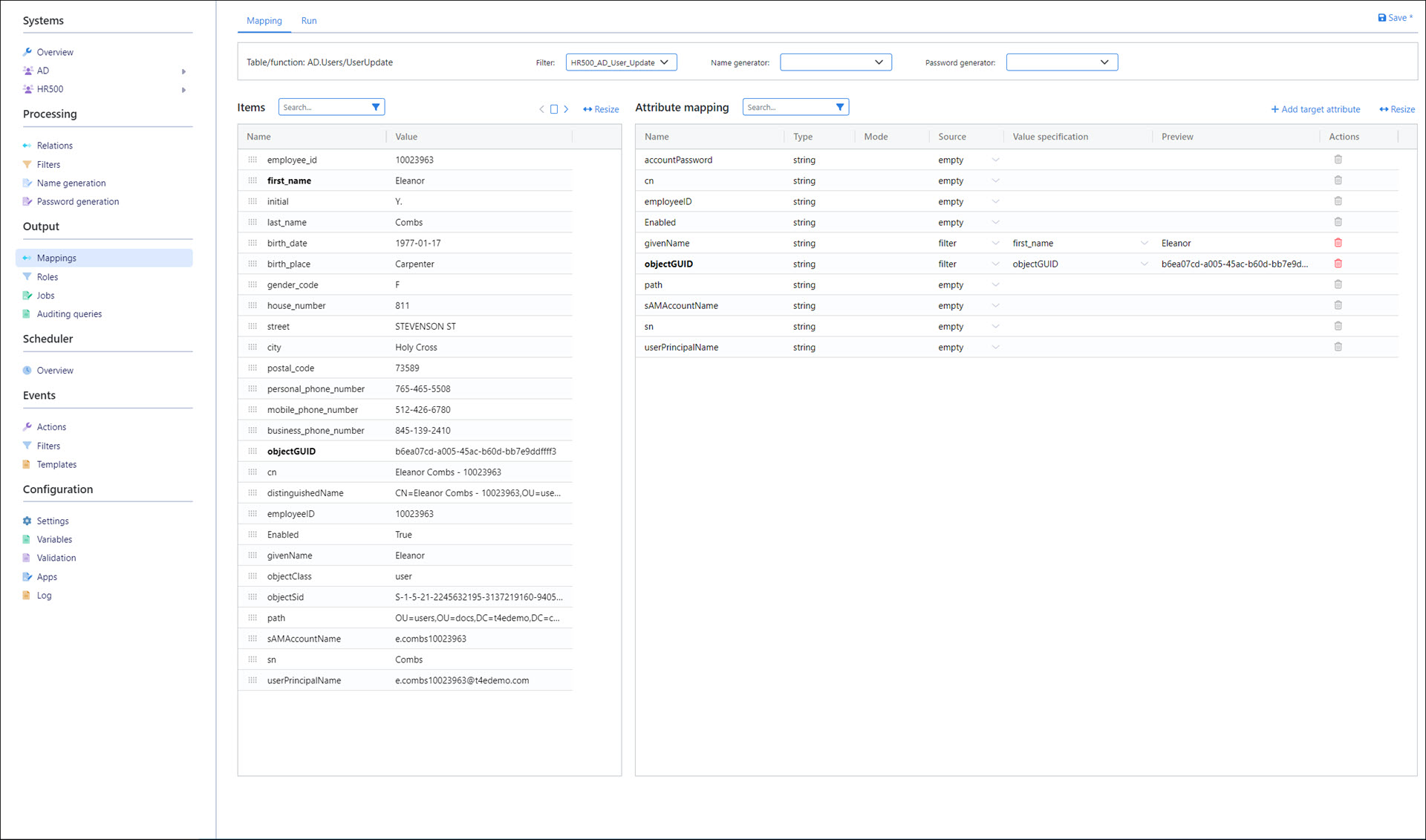
Attribute
Item
Note
givenName
first_name
objectGUID
objectGUID
Required.
Click Save.
Collect data
We'll go back to Systems > Overview and click
 Collect for both our systems.
Collect for both our systems.
Preview the mapping
If we edit our HR500_AD_UserUpdate mapping and go to its Run tab, the five names we changed in the CSV source data are now queued.
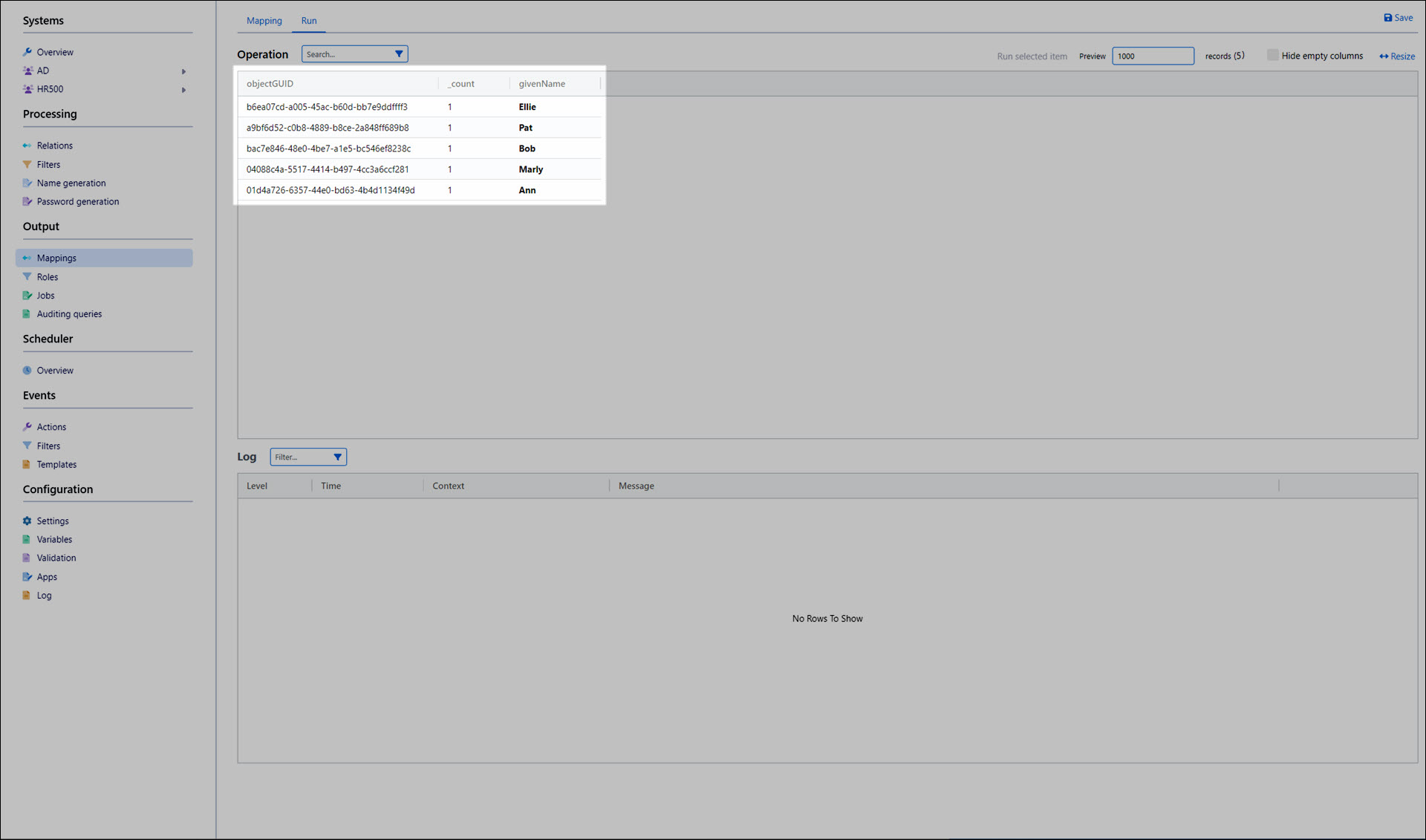
We'll select one of the rows in the Operation pane and click Run Selected Item.
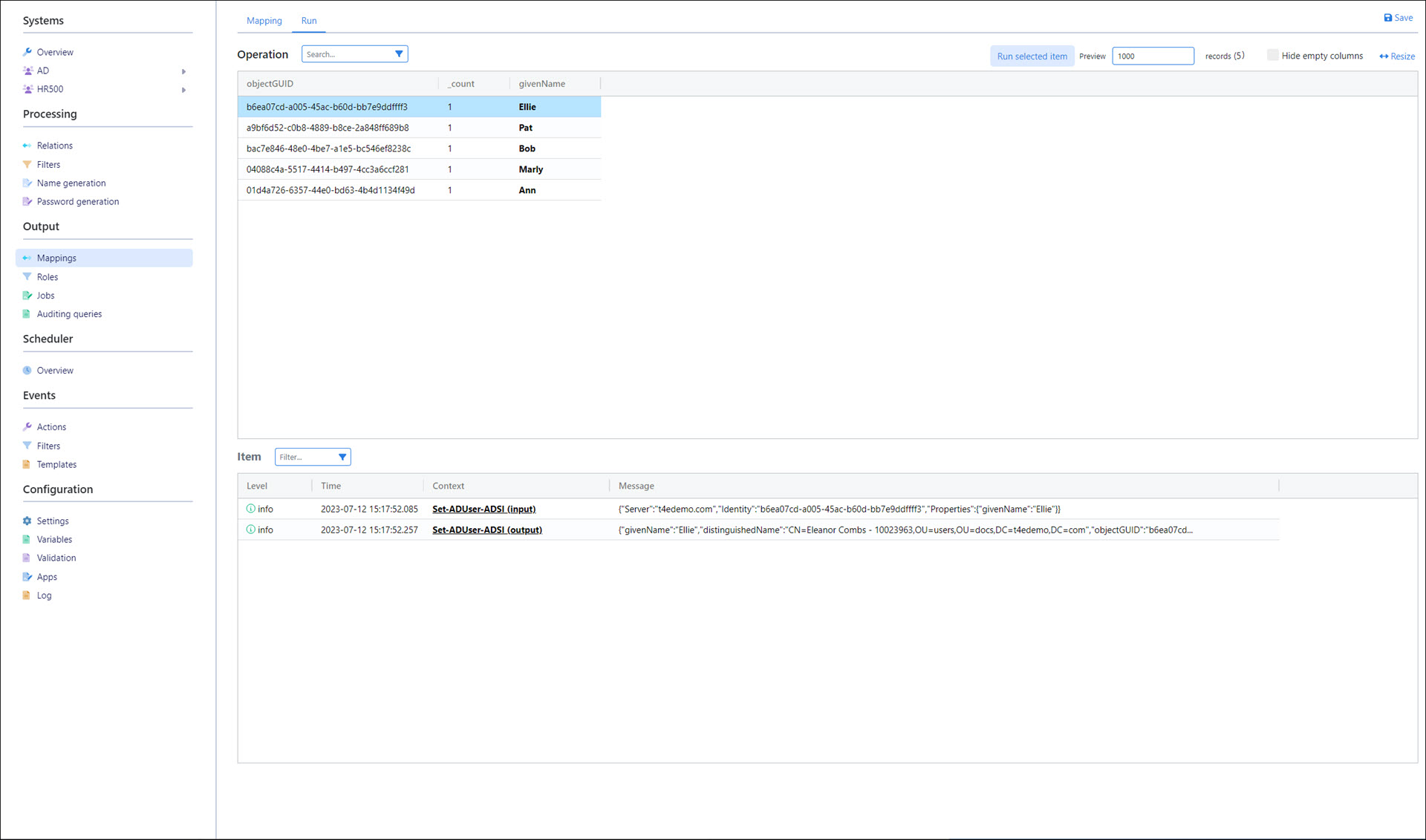
Tip
Double-click a bolded cell to see more details about it.

This user's first name has been updated in AD.
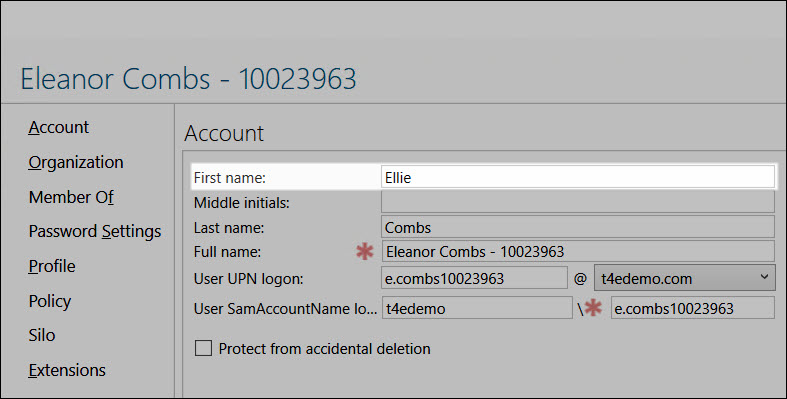
Update the HR500_AD job
Go to Output > Jobs.
For the HR500_AD job, click
 Edit Job.
Edit Job.Go to the Configuration tab.
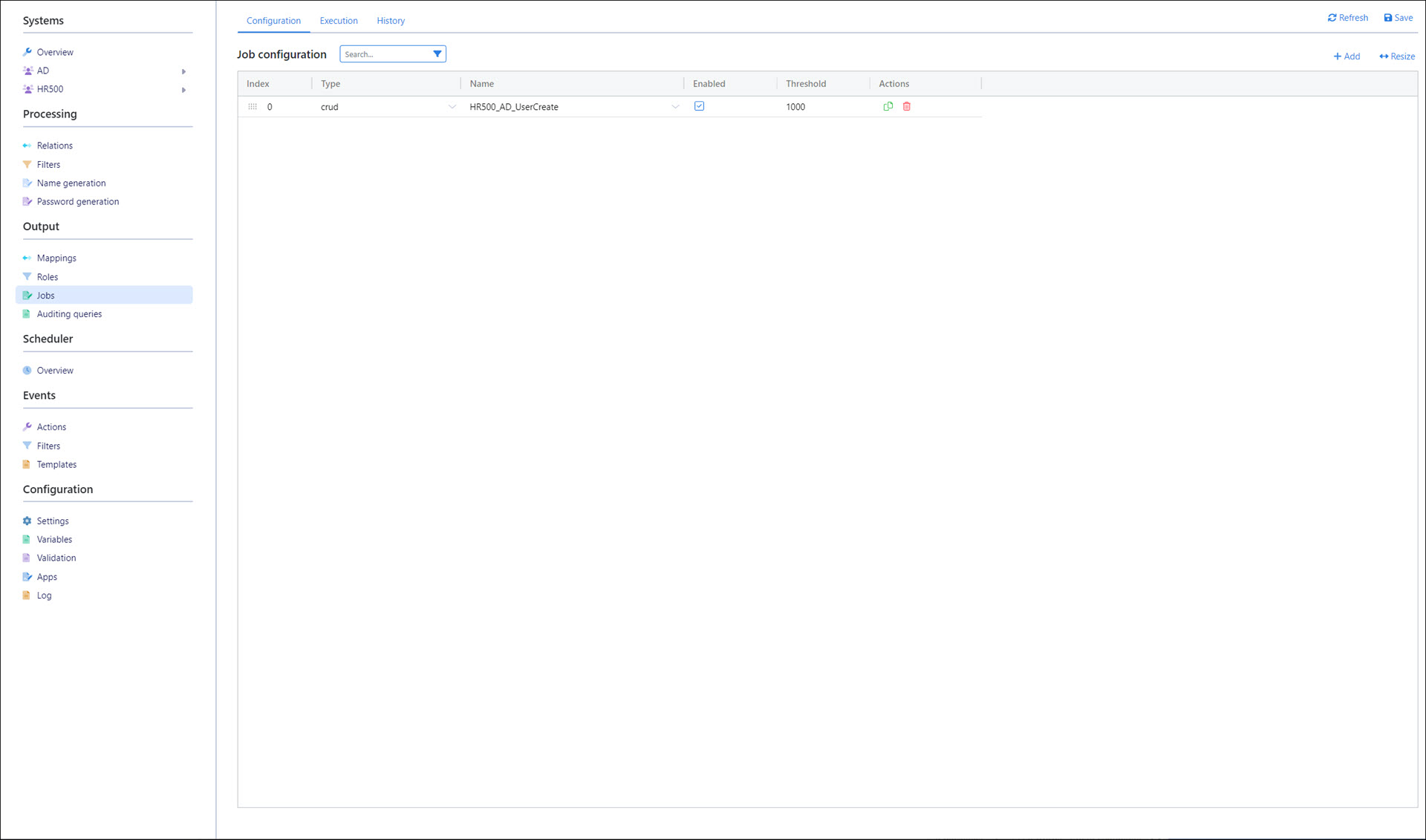
Click Add.
For this job item, we'll select a type of crud, and for the Name, we'll select the HR500_AD_UserUpdate mapping. We'll set the Threshold to
1000.
Click Save.
Run the job from the schedule
As a final step, we'll go back to Scheduler > Overview and click
 Manual Run for the HR500 schedule.
Manual Run for the HR500 schedule.Four updates are found and written into AD (the five changes we made, minus the one that we already test ran).
